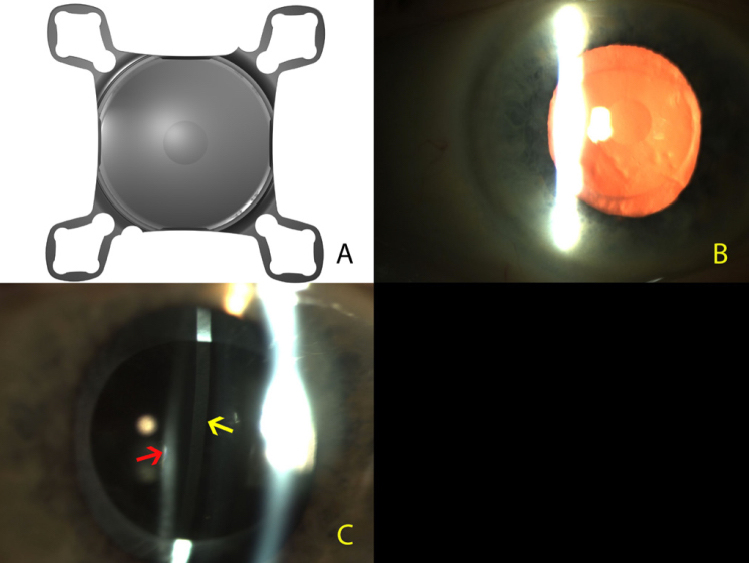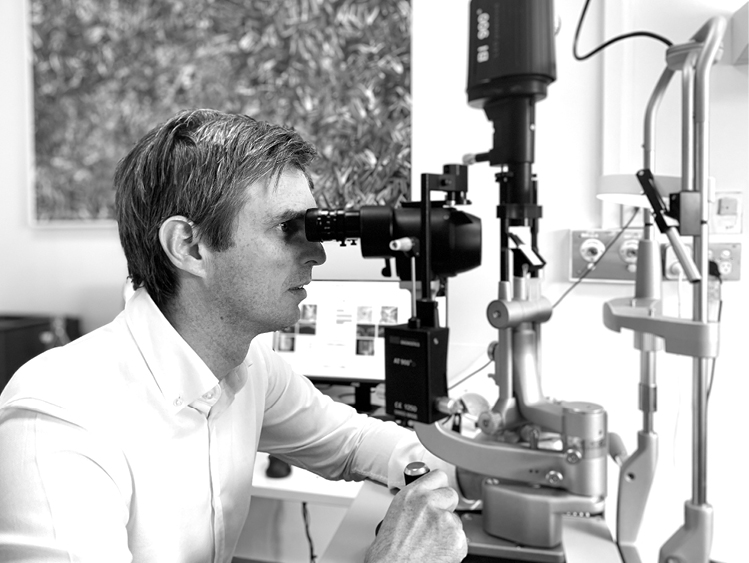SML LENS
SML lens for Age Related Macular Degeneration
What is it?
This is an intraocular lens implant with a central 1.5mm optical magnifying zone. The lens does not affect the distance vision of the eye, but it does increase the magnification while reading fine prints. The intraocular lens implant sits behind the iris of the eye in patient’s who have had previous cataract surgery.
How much magnification does the lens provide?
2.2x magnification for near vision only. The central lens optic zone has a power of +10.00 diopters in the eye and this equates to 2.2x magnification when print is held at the appropriate distance (about 15cm). The patient will require training and practice to be able to read at the necessary working distance. The patient’s long-distance vision is not compromised nor improved with this lens implant.
Who does the lens work for?
This lens is designed for patients with dry age-related macular degeneration who have had previous cataract surgery with artificial lens implantation. Not everyone with dry AMD will be suitable as there are specific criteria to meet to ensure success. The patient will have to undergo specific low vision assessment and consultation to determine eligibility.
How is the lens placed in the eye?
Dr Adam Rudkin will place the lens into the eye under surgical conditions. The eye will be anesthetised, and the procedure will take about 10-15 minutes. The patient will be in hospital for a few hours but can usually return home the same day.
Is the lens placed in one eye or both?
Only one eye, the better seeing eye.
Are follow ups required?
Yes: the next day after surgery, then one week, one month and 3 months.
Does this lens cure or treat macular degeneration?
No. This lens is designed to improve functional near vision – it does not cure or treat age related macula degeneration.
How successful is this lens implant?
A study based on 50 patients in Europe showed that this lens is safe and effective to use in a specific group of patients. Patients enrolled in this study had existing near vision of N6 to N20 with glasses at 40cm distance. The near vision 1 month after surgery was N3.5 to N10.
When vision is affected, cataract surgery can be considered. Whereas, in cases of mild cataract simply updating glasses may be sufficient.


contact us
FOR PATIENTS
PHONE: 08 7070 2502
FAX: 08 8125 3880
POST: Specialist Eye, Glenelg Community Hospital,
5 Farrell St, Glenelg South SA 5045
FOR REFERRERS
Thank you for your support in the co-management of patients with us.
For urgent cases, please call the clinic directly.
Alternatively, you can email or fax through your referral.
PHONE: 08 7070 2502
FAX: 08 8125 3880
EMAIL: [email protected]
